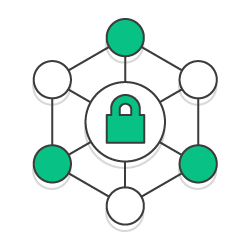AWS Security Blog
Tag: credentials
Rotate Amazon RDS database credentials automatically with AWS Secrets Manager
August 31, 2021: AWS KMS is replacing the term customer master key (CMK) with AWS KMS key and KMS key. The concept has not changed. To prevent breaking changes, AWS KMS is keeping some variations of this term. More info. Recently, we launched AWS Secrets Manager, a service that makes it easier to rotate, manage, […]
The Most Viewed AWS Security Blog Posts in 2017
September 9, 2021: Amazon Elasticsearch Service has been renamed to Amazon OpenSearch Service. See details. The following 10 posts were the most viewed AWS Security Blog posts that we published during 2017. You can use this list as a guide to catch up on your AWS Security Blog reading or read a post again that […]
Adhere to IAM Best Practices in 2016
As another new year begins, we encourage you to review our recommended AWS Identity and Access Management (IAM) best practices. Following these best practices can help you maintain the security of your AWS resources. You can learn more by watching the IAM Best Practices to Live By presentation that Anders Samuelsson gave at AWS re:Invent […]
New in IAM: Quickly Identify When an Access Key Was Last Used
Rotate access keys regularly and remove inactive users. You’ve probably heard us mention these as two AWS Identity and Access Management (IAM) security best practices. But how do you know when access keys (for an IAM user or the root account) are no longer in use and safe to delete? To help you answer this […]
An Easier Way to Determine the Presence of AWS Account Access Keys
Last month, the AWS Security Blog encouraged you to adhere to AWS Identity and Access Management (IAM) best practices. One of these best practices is to lock away your AWS account (root) access keys and password, and not use them for day-to-day interaction with AWS. In fact, when it comes to your root account access […]
Make a New Year Resolution: Adhere to IAM Best Practices
As another new year begins, we want to encourage you to be familiar with recommended AWS Identity and Access Management (IAM) best practices. Following these best practices can help you maintain the security of your AWS account. You can learn more by watching the IAM Best Practices presentation that was given by Anders Samuelsson at […]
New in the IAM Console: An At-a-Glance View of Last AWS Sign-In
Have you ever needed to quickly look up the last time one of your users signed in to your AWS account? Or have you been following security best practices and want verify that no one in your organization has been signing in using the AWS root account? If you use AWS CloudTrail, the information is […]
Some AWS SDKs Security Features You Should Know About
The AWS SDK team recently added and documented some security-related features that we think you shouldn’t miss. Check these out! Updates for managing access keys in the .NET and Java SDKs. In Referencing Credentials using Profiles, blogger Norm Johanson describes how you can now put a credentials file in your user folder. This great security […]
What to Do If You Inadvertently Expose an AWS Access Key
Keeping your AWS keys secure is one of the most important things you can do. This week Will Kruse, Security Engineer on the AWS Identity and Access Management (IAM) team, explains the steps to safeguard your account in the event you inadvertently expose your AWS access key. Your AWS credentials (access key ID and secret access […]
A Safer Way to Distribute AWS Credentials to EC2
If you have applications running on EC2 that also access other AWS services like Amazon S3 or Amazon DynamoDB, then these applications require credentials out on the EC2 instance. You can hard-code AWS access keys into your application, but you’re faced with the added responsibility of distributing them to the instance securely and then the […]



